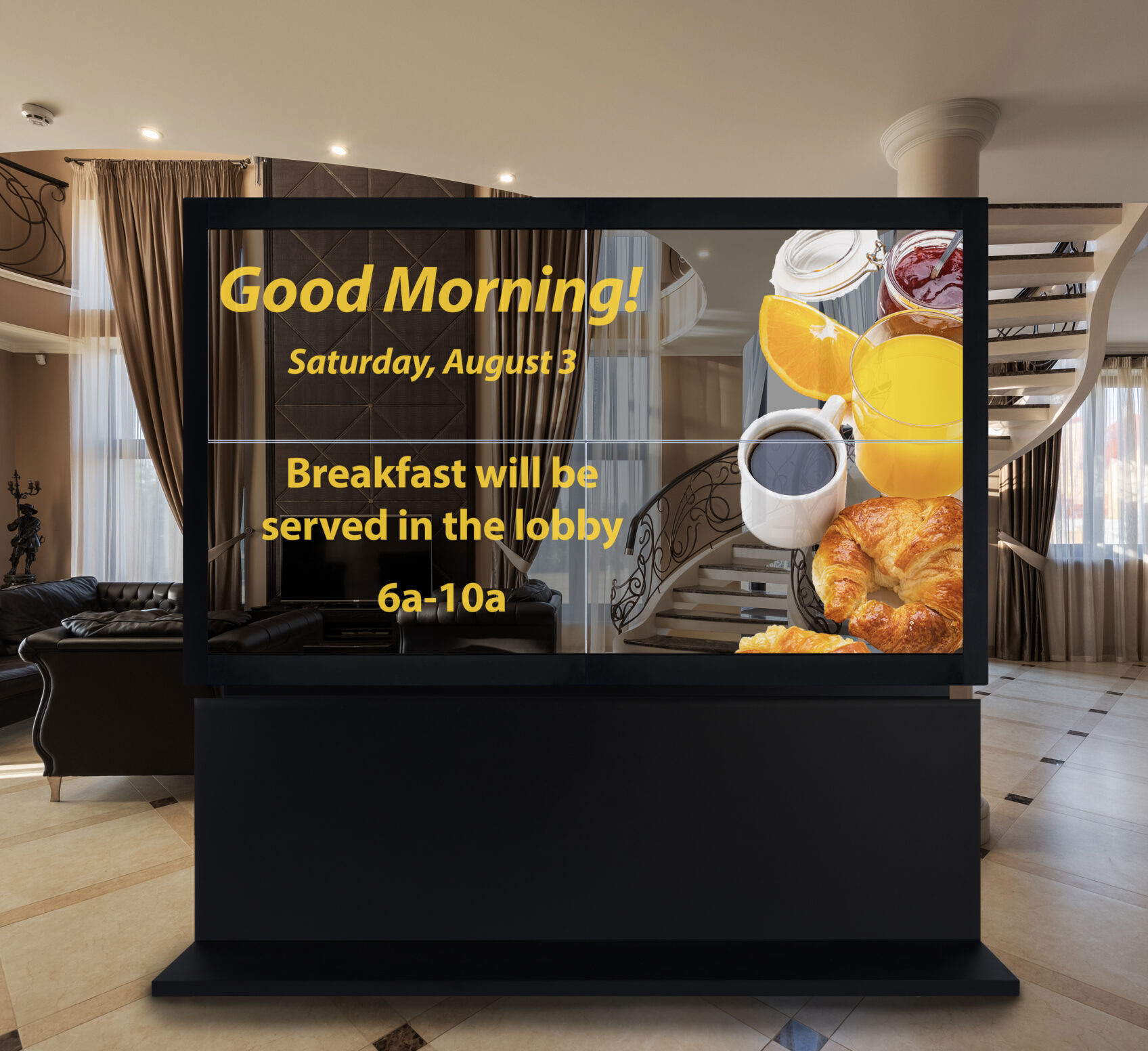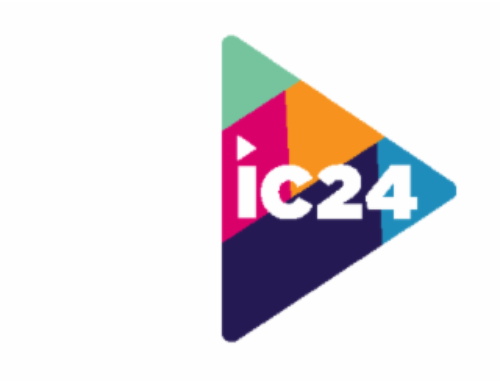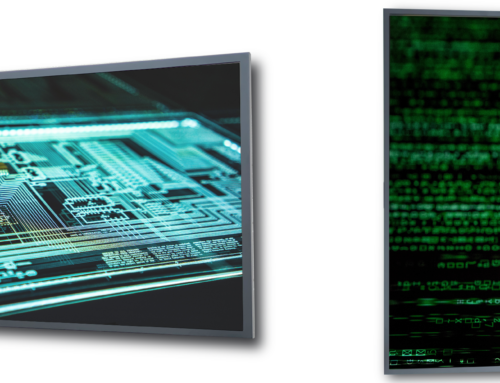Static signage (decals, stickers, etc.) can be used effectively on windows and digital signage can use vibrant video content to draw users’ attention from within. Transparent OLED (T-OLED) combines the best of both worlds.
There’s never been display technology quite like this, so how does it work?
What is OLED?
OLED is an organic light-emitting device comprised of several layers of organic film placed between two conductors. Electrical impulses are sent through these layers and create light. (For a more detailed explanation, check out HowStuffWorks). Since OLED does not require backlight and filters (like LCDs) this makes them more energy efficient, more compact, and lends them virtually infinite contrast. OLED is currently being used to make TVs, smartphones/watches, fitness bands, car displays, and VR/AV headsets.

What is T-OLED?
T-OLED is a transparent version of OLED. In T-OLED, every component of the OLED structure has been designed to be as see-through as possible, allowing light to pass in both directions. This gives the display its transparent nature and allows users to see through it when off. It also means that the spaces on a display that are not showing content stay see-through.
The plastic layers of OLED are thinner, lighter, and more flexible than the crystalline layers in LED or LCD, which means there is an opportunity to place display technology in places you might never expect.
What makes T-OLED Special?
T-OLED allows displays to be placed in spaces where they can seamlessly blend into the background when not in use. Their transparency also allows users to place items behind the display while showing dynamic, informational content about the items.

A T-OLED being used in a hybrid meeting to make it feel like the remote coworker is in the room with everyone else.
The technology also enables the ability to hide components such as the power board and controller (AD) board separate from the screen. In LCD and LED displays, the components are typically placed behind the panel and are then protected by the rear cover. T-OLEDs necessarily separate these components from the screen, which means even more flexibility in placement and installation.
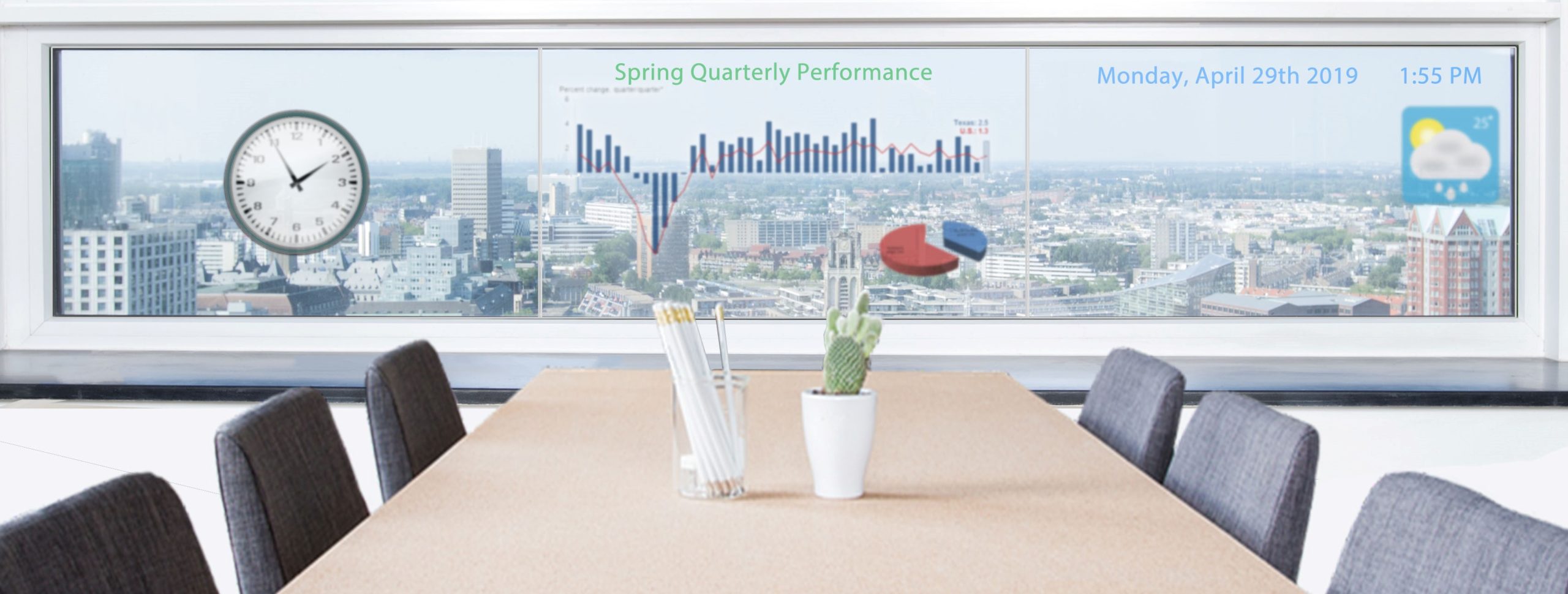
Where and how T-OLEDs can be used:
- Museums & cultural centers
- The display can be placed in front of a static exhibit and used to show an informational video about the history of the exhibit or dynamic images of the exhibit’s story.
- Corporate lobbies
- Use the T-OLED to bring your visitors through your company’s historical timeline while showing artifacts and items from specific dates behind the display(s).
- Introduce a new product by showing a video or plans in front of a prototype of the item.
- Use the T-OLED to bring your visitors through your company’s historical timeline while showing artifacts and items from specific dates behind the display(s).
- Retail spaces
- Place the T-OLED in front of the store display and provide product pricing or information on the screen while still showcasing the physical merchandise.
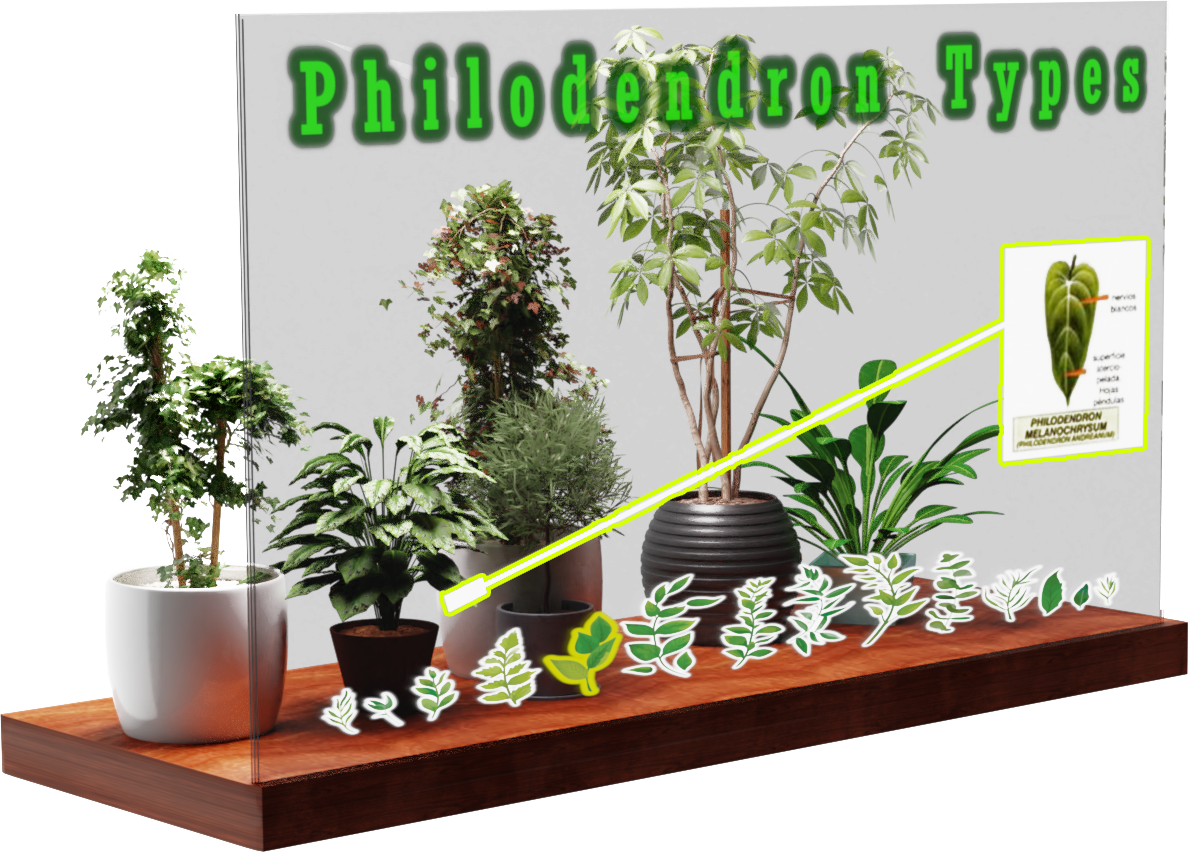
A T-OLED is placed in front of a plant display with detailed information about the variety of plants shown on the screen.
- Hybrid workspaces
-
- T-OLEDs allow you to feel like someone is in the room with you while video conferencing. The remote caller will appear to be in the room with you as long as their background is set to black.
- Place it in a window to see the weather/ news while still allowing a view of the outdoors.
- Integrate the display into a trophy case, providing video and storytelling that gives background on the trophy or award(s).
- Create a see-through video wall.
Design Flexibility
The flexibility and revolutionary look of the T-OLED makes the futuristic representations of display technology in sci-fi movies a current-day reality. T-OLEDs can be placed in landscape or portrait orientation as well as video wall configurations (up to two rows high in landscape with infinite columns or two columns wide in portrait with infinite rows). This makes for a narrow (~10mm) tiled gap between displays without the prominent black bezel of LCD video walls. GPO Display can also redesign & customize the T-OLED’s electronics box so that it may fit in tight spots like window frames or table pockets typically reserved for cable-cubby boxes.
If you would like to learn more about GPO Displays T-OLED options, check them out here and view our product cut sheet here.

